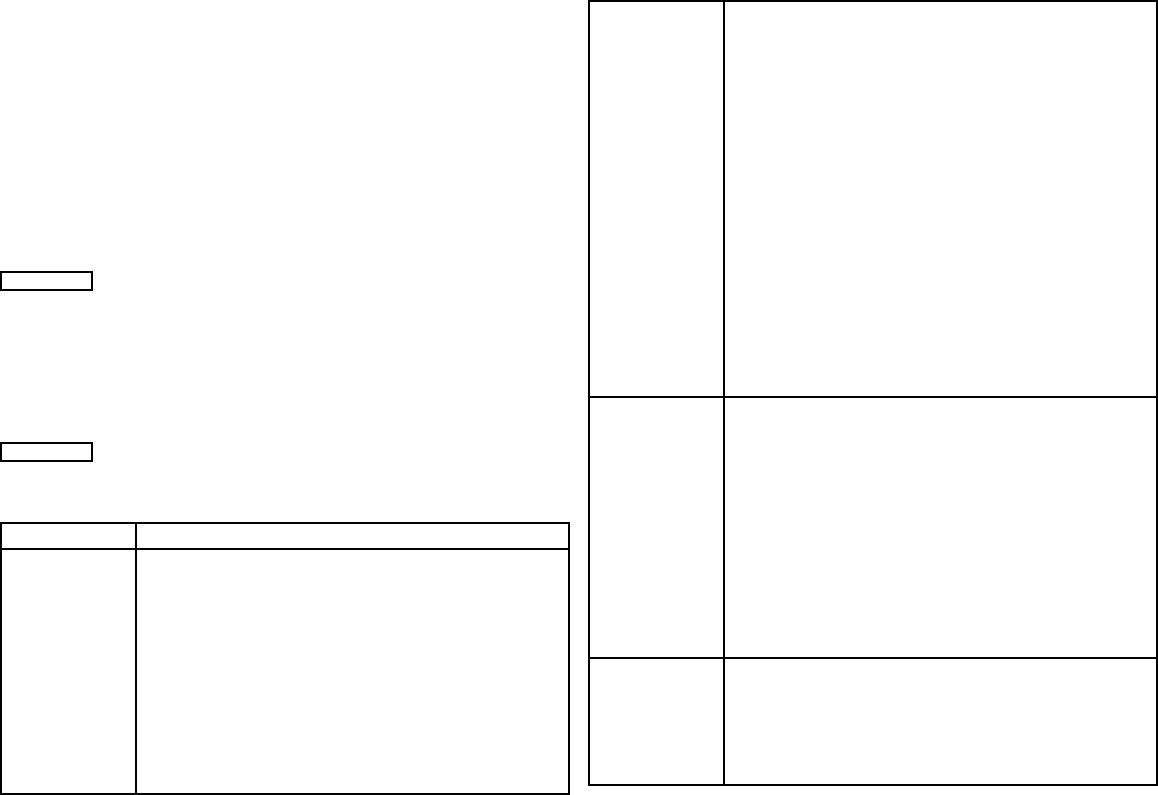
Troubleshooting
The table below provides basic troubleshooting guidance. If you fail
to resolve the problem after taking the corrective actions suggested,
contact the equipment manufacturer or a Robin Subaru dealer.
Many troubleshooting procedures present hazards
that can result in severe personal injury. Only
qualifi ed service personnel with knowledge of fuels,
electricity, and machinery hazards should perform
service procedures.
Review the safety precautions on the inside cover
page.
Hot engine parts can cause severe burns. Always
allow the engine time to cool before performing any
maintenance or service.
! WARNING
! WARNING
Speed Control Adjustments
Engine speed adjustment must be attempted only by a qualifi ed me-
chanic and the adjustments must be made using an accurate tachom-
eter. It is recommended that low-idle speed be adjusted between 1800
to 2200 RPM and high idle speed 3700 to 3800 RPM. Check in your
welder manufacture’s manual for exact speed settings.
Problem Probable Cause and Remedy
Engine Starting
Engine cranks
slowly or not at all
Poor battery connections: Clean and tighten the positive (+) and
negative (-) connections at battery and engine.
Battery is not fully charged: Recharge the battery.
Electric starter is faulty: Check starter brushes and bearings.
Improper engine oil: Change oil having the proper viscosity for
the ambient temperature.
There is a load on the engine: Remove load and retry.
Back pressure: There is excessive back pressure due to a
plugged or bent exhaust pipe.
Engine Starting
Engine cranks but
fails to start
Damaged spark plug(s). Check the spark plug gap. Check for
a bad insulator on plug and replace if damaged. Clean carbon
deposit from electrode. Id wet, dry electrode.
Fuel Supply. Check fuel supply and shut-off valve. Check fuel fi lter
and clean if dirty. Check fuel fi lter: clean or replace if dirty. Check
fuel line connections into carburetor for air leaks.
Fuel. Gasoline may have water mixed in or the gasoline grade is
not correct.
Carburetor problems. Flooding carburetor, the fl oat may be bad
or stuck. Varnish build up deposits in the carburetor, the carburetor
will have to be disassembled.
Governor and throttle linkage. Check linkage connections. Check
tension in springs. Check governor, throttle and speed adjustments
.
The fuel cut-off solenoid is faulty. Check for lose or damaged
wires and connectors. Check voltage levels at the connector to the
solenoid. Replace harness or solenoid.
Check air cleaner and service if dirty.
Engine Starting
Electric starter
does not operate
Key or start switch. Check wiring connections and switch.
No continuity between the key switch and the starter. Replace
wires.
No continuity between the battery and starter. Replace cable.
Low battery. Change or recharge battery.
Starter solenoid is bad. Check voltages, clean repair, or replace.
Starter motor is bad. Check brushes and wiring, repair or replace.
Engine seizure. The crankshaft has seized or the piston and cylin-
der have seized. Check crankshaft bearings and bearing surface. 1
Engine Starting
Electric starter
operates but
engine does not
start
Low fuel.
Poor wiring connection or no continuity of ignition system.
Check wiring connections and ignition coils for a short.
Electric starter is bad. Slow cranking RPM is caused by low volt-
age at starter or worn brushes or bearings. Repair or replace.


















